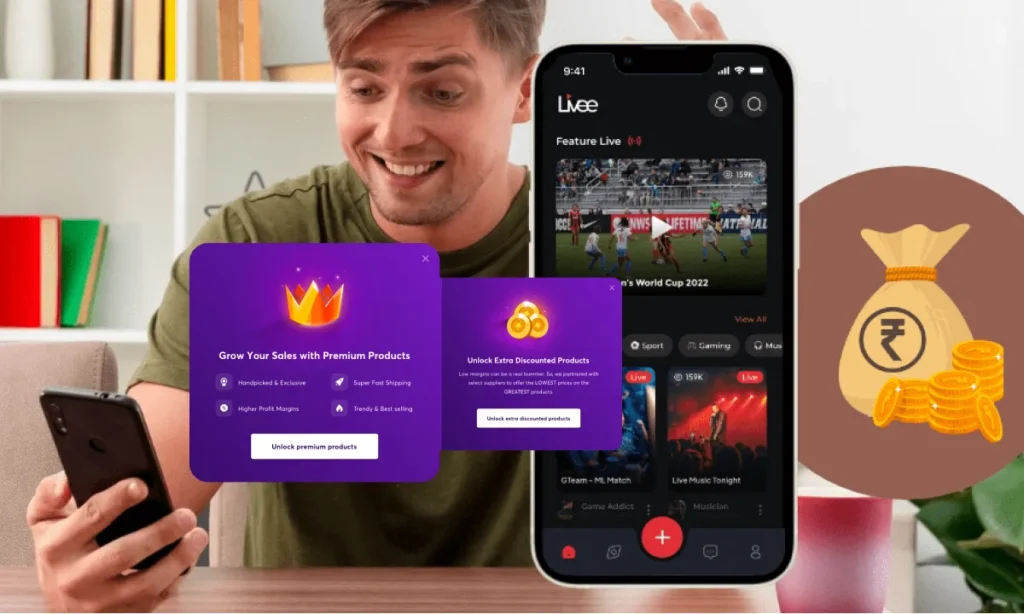By 2025, live video streaming will have evolved beyond simple entertainment to become an effective tool for engagement, brand development, education, and industry-wide revenue generation. High standards for user experience and content quality have been set by platforms like YouTube Live, Twitch, and Instagram Live, and both startups and large corporations are looking for ways to use live video to engage with their audiences in real time.
If you’re looking to build a live video streaming app that stands out in today’s competitive market, you need more than just a basic streaming setup. You need a strategy that blends intuitive design, real-time engagement tools, and smart monetization models.
In this blog, we’ll break down everything you need to know to create a live streaming app that captivates users and drives revenue in 2025.
Why Live Video Streaming Is Booming in 2025
Live streaming continues to grow exponentially thanks to several key trends:
- 5G connectivity makes HD and ultra-low latency streaming seamless
- Increased mobile usage is driving real-time engagement
- The creator economy is fueling content-driven platforms
- Demand for virtual experiences in education, fitness, retail, and events
Businesses are now investing in custom live streaming apps to avoid the limitations of third-party platforms and gain full control over their content, branding, and monetization.
Key Features Your Live Streaming App Must Have
Building a compelling app goes beyond just video broadcasting. Here’s what your app should offer:
1. Seamless Onboarding
- Easy sign-up/login via email, phone, or social accounts
- Personalized user profiles
2. Real-Time Streaming
- Integration of RTMP, HLS, or WebRTC for smooth streaming
- Adaptive bitrate streaming for all network conditions
3. Interactive Tools
- Live chat, emoji reactions, polls, and Q&A features to keep users engaged
4. Multi-Device Compatibility
- Native apps for iOS and Android
- Web platform for desktop users
5. Content Discovery
- Categories, trending streams, personalized recommendations
6. Robust Admin Panel
- Manage users, streamers, content, and monetization with analytics.
7. Monetization Options
- Subscriptions, ads, pay-per-view, tipping, and sponsorship integrations
8. Content Moderation
- AI-based moderation to filter inappropriate content and manage user behavior
Tech Stack for Live Streaming App Development
Here’s a proven tech stack to ensure scalability, performance, and quality:
Component Technology Options
Frontend Swift (iOS), Kotlin (Android), React.js
Backend Node.js, Django, or Ruby on Rails
Video Streaming WebRTC, HLS, or RTMP
Cloud Infrastructure AWS, Google Cloud, Azure
CDN Cloudflare, Akamai, Amazon CloudFront
Database PostgreSQL, MongoDB
Notifications Firebase, OneSignal
Security DRM, SSL, OAuth 2.0
Partnering with a skilled video streaming app development company ensures proper tech integration and future-ready architecture.
How to Monetize a Live Streaming App in 2025
There are multiple revenue streams to explore:
1. Subscription Model (SVOD)
Users pay a monthly/yearly fee for access to premium content, like Netflix.
2. Ads-Based Model (AVOD)
Offer free access with in-stream ads — similar to YouTube.
3. Pay-Per-View (TVOD)
Monetize individual streams, events, or episodes.
4. Tipping and Donations
Popular among creators, users send money to streamers during live sessions.
5. Sponsorship and Brand Deals
Integrate branded content or promotional streams for businesses.
6. Merchandising & Affiliate Sales
Enable creators or brands to promote and sell products during live sessions.
Industries Using Live Streaming in 2025
Live video streaming is no longer limited to media and entertainment. Here’s how different sectors are using it:
- eLearning & EdTech – Virtual classrooms, training, tutoring
- Fitness & Wellness – Live workout sessions, coaching
- Retail & eCommerce – Live product launches, shopping streams
- Corporate & Enterprise – Webinars, virtual town halls, live demos
- Healthcare – Virtual consultations, health education streams
- Gaming – Esports, live gameplay, tournaments
- Events & Entertainment – Concerts, stand-up, conferences, shows
You can create a live streaming app tailored for a niche or multi-industry use, depending on your goals.
Step-by-Step Guide to Building Your App
Here’s how to move from idea to launch:
Step 1: Define Your Use Case and Audience
Decide whether you’re building for content creators, enterprises, or niche audiences.
Step 2: Choose Your Monetization Model
Determine how you’ll generate revenue early in the planning phase.
Step 3: Hire a Development Partner
Choose a team with proven expertise in live video app development.
Step 4: Design the UI/UX
Create intuitive and mobile-first designs for all user roles (viewers, creators, admins).
Step 5: Develop the MVP
Start with core features: login, stream, chat, and basic monetization. Add more as you grow.
Step 6: Test, Deploy, and Scale
Conduct performance testing, security audits, and roll out in phases.
Cost to Build a Live Streaming App
The cost varies based on your requirements. On average:
App Type Estimated Cost (USD)
MVP (basic version) $35,000 – $60,000
Mid-Level App $60,000 – $120,000
Feature-Rich Platform $150,000+
Costs depend on tech stack, design complexity, third-party integrations, and development location.
Final Thoughts
Live streaming apps are essential tools for schools, producers, and marketers alike in a world where success is determined by real-time engagement. However, your platform requires scalable monetization, personalized experiences, and retention features in addition to streaming if it is to be a true success.










































